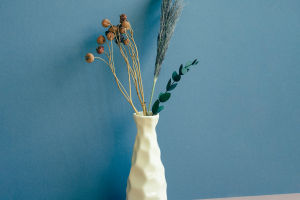Combination bouquets are a form of floral art that merges various types of flowers into a single arrangement, designed meticulously to create a harmonious and aesthetically pleasing composition.
These bouquets combine the diverse shapes, colors, and fragrances of different flowers and achieve a layered and visually striking effect through thoughtful composition and color coordination.
Often seen at weddings, birthdays, anniversaries, and other special occasions, combination bouquets are used as gifts and decorations, carrying heartfelt emotions and well wishes.
Compared to bouquets made of a single flower type, combination bouquets stand out because of their variety and uniqueness, allowing them to express more intricate and profound emotions.
The inspiration for combination bouquets frequently stems from nature. Floral designers often take cues from seasonal shifts, landscape characteristics, and cultural symbols.
In the spring, combination bouquets may feature brightly colored blooms such as tulips, daffodils, and hyacinths to represent renewal and the vibrancy of life. During the summer, florists incorporate more vibrant and dynamic flowers like sunflowers, lilies, and dahlias, symbolizing warmth and celebration.
Autumnal bouquets feature deep, rich hues, using flowers like chrysanthemums, and roses, and even including colorful autumn leaves, embodying the themes of harvest and gratitude.
For winter, designers may opt for elements like pine branches, holly, and cranberries to create a cool and comforting atmosphere.
Color coordination plays a critical role when designing a combination bouquet. Different color combinations can evoke various emotional responses and create distinct visual effects.
For example, red flowers often symbolize passion, love, and energy; white flowers represent purity, peace, and respect; yellow flowers are associated with joy, friendship, and warmth; while purple conveys a sense of mystery, royalty, and romance.
Florists carefully select these colors based on the nature of the event and the preferences of the client to create a visually balanced arrangement.
For instance, wedding bouquets often feature a combination of white and pink flowers to symbolize purity and romance, with touches of greenery to enhance the natural feel. For birthday bouquets, especially those meant for friends, bright yellows and oranges are typically chosen to convey joy and good wishes.
Beyond color, the shape of the flowers is another crucial aspect in the design of a combination bouquet. The various shapes of the blooms contribute to creating focal points and layers within the arrangement.
Larger flowers, such as roses, peonies, and sunflowers, often serve as the main focal points, as their size and fullness immediately draw attention. Smaller flowers like baby’s breath and carnations fill gaps, adding texture and intricacy to the bouquet.
Designers also incorporate greenery, such as ferns or eucalyptus leaves, to enhance the bouquet's layers and introduce a sense of vitality and freshness to the arrangement.
A combination bouquet's success is not only determined by the selection and coordination of flower types but also by the techniques used to construct it.
When assembling the bouquet, florists often use a spiral binding method, which allows the flowers to naturally spread outward, creating a rounded and well-balanced shape.
This technique also ensures that the bouquet remains stable and maintains its structural integrity. Additionally, the size of the bouquet is adjusted depending on its intended use.
Handheld bouquets are typically smaller and more compact, while decorative bouquets tend to be larger and more loosely arranged, creating a sense of space and grandeur.
A combination bouquet is more than just a beautiful arrangement; it also carries deep symbolic meanings and emotional messages. Different flowers have unique symbolic meanings in various cultures.
For example, roses symbolize love, particularly red roses, which are often exchanged as tokens of affection between lovers. Lilies represent purity and elegance, making them common in both weddings and funerals.
Carnations, on the other hand, are a symbol of maternal love and gratitude, often gifted on Mother’s Day. In a combination bouquet, these symbolic meanings often intertwine, making the arrangement visually pleasing and rich in meaning.
For instance, the combination of white roses and lilies is frequently used in weddings, symbolizing pure and sacred love. A bouquet made with carnations and daisies, on the other hand, is ideal for gifting to mothers or friends, conveying warmth and appreciation.
Combination bouquets offer more than just aesthetic pleasure through their intricate mix of color, shape, and structure. They also serve as a unique means of emotional expression.
A bouquet can be a testament to romance or a symbol of gratitude; it can enhance the ambiance of significant events or bring a touch of warmth and surprise into everyday life.
As floral design continues to evolve, the styles and forms of combination bouquets will keep changing, providing people with even more diverse and enriching aesthetic experiences.


